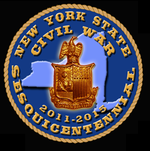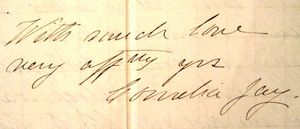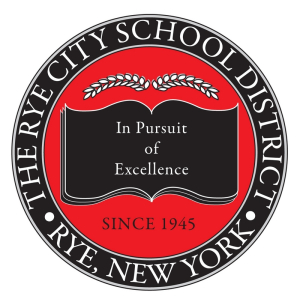Rye’s Civil War Diaries of Cornelia Jay
 Suzanne Clary, president of the Jay Heritage Center, is a MyRye.com history correspondent. Today our history teacher tells us about Rye's Civil War diaries.
Suzanne Clary, president of the Jay Heritage Center, is a MyRye.com history correspondent. Today our history teacher tells us about Rye's Civil War diaries.
CORNELIA JAY’S CIVIL WAR DIARY 1861 – 1865
In April 1861, three weeks after celebrating her 22nd birthday, Cornelia Jay, granddaughter of native New Yorker John Jay, began a diary that she would keep throughout America ’s bloodiest battle: the Civil War between the Union and the Confederacy.
 Her entries, written at her family’s Rye home and in Manhattan , are not grand or sweeping like the paragraphs of a historical novel; in fact it is often her unadulterated candor and brevity which gives the events she records greater clarity these 150 years later. The soldiers on her pages, depicted equally in all their heroism or frailty, feel like our contemporaries thanks to the unstudied poignancy of her writing. And because her voice is unique, Cornelia is an irresistible witness to our mid 19th century past particularly in this sesquicentennial year.
Her entries, written at her family’s Rye home and in Manhattan , are not grand or sweeping like the paragraphs of a historical novel; in fact it is often her unadulterated candor and brevity which gives the events she records greater clarity these 150 years later. The soldiers on her pages, depicted equally in all their heroism or frailty, feel like our contemporaries thanks to the unstudied poignancy of her writing. And because her voice is unique, Cornelia is an irresistible witness to our mid 19th century past particularly in this sesquicentennial year.
Her accounts substantiate the political and personal turmoil that clashing North and South ideologies about the role of government and the issue of slavery created for all people of all races and genders – even the descendants of a man who advocated for emancipation his entire career. This makes her diary all the more fascinating as we grapple to understand modern incarnations of social inequity and civil war.
To commemorate the 150th anniversary of the Civil War, JHC will share some of the entries from Cornelia’s diary with My Rye each week and put them in context of historic events. These excerpts will illustrate Cornelia’s fears and hopes for the fate of her family, friends and the town that she loved. In revealing these stories for the first time to the public, we open a very personal window into her life and the lives of the Jay Family in Rye . The Civil War stories of other Rye residents like the Van Rensselaers and the Wainwrights will also come to life and inspire us to picture what Rye looked like over a century and a half ago.
Readers who want to learn more can visit JHC’s newly opened Civil War Exhibit sponsored by the New York State Civil War Sesquicentennial Committee and the New-York Historical Society; it is called “The Jay Family and the Abolition of Slavery: From Manumission to Emancipation” and is on view at the 1838 Jay Mansion from 2-5pm on Sundays now through October.






